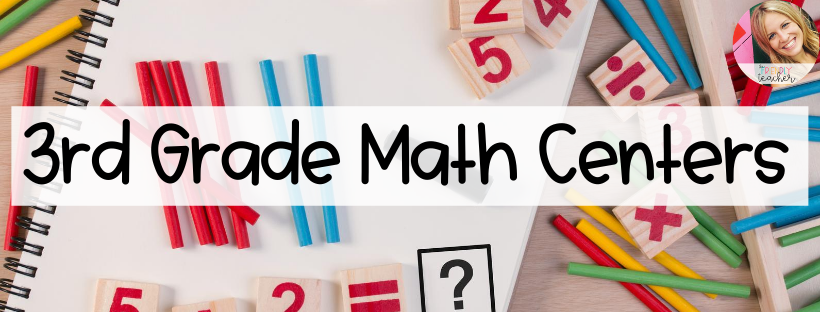
I get asked often how to run math centers in the third grade classroom. Today, I am going to share with you exactly how to run math centers in your classroom.
Why math centers?
Math centers allow students to stayed engaged the entire time, practice content in many modalities, and learn at their level. They are truly the only way I teach math.
Framework
Everyday I start math with a 5 minute mini lesson. Seriously, no longer than five minutes.
It is a quick review because each of my groups are at different levels.
Then, we split off and we do each station for 15-20 minutes each.
My students visit every station every day.
Then, within the groups they are doing different things. My stations are M.A.T.H. (some weeks/months I will add an S and I will explain why later)
M-Math Facts
During this station students are practicing different math facts. There are two different things that can happen during this stations.
Flash Card Work
Students work with a partner going back and forth with flash cards. I do this about once or twice a week.
Technology
This is what they are typically doing during math fact time. I change up the website or the thing they are doing during technology time often. Some things students may do are..
- Prodigy– This is a game based site where students can practice skills that you assign them. Read more about it here!
- Xtra Math– Here they are just doing math fact practice.
- Google Slide Decks– These slide decks I created help students practice the math skill we are working on during that unit. This will take them several days to complete, but are highly engaging! Head here!
A-At Your Seat
For at your seat time students are doing a worksheet that focuses on the skill we are learning. They have to do this by themselves. This is where I get an assessment on how they are doing.
I either will have all students doing the same worksheet that focuses on the standard or skill at the third grade level or I will differentiate the worksheet.
When I differentiate the worksheet I will give the students the worksheet at teacher time when we are done for easy organization.
T-Teacher Time
During this time I am teaching the skill that we are working on at different levels. This is my direct teaching time with the group. I will start off the unit teaching all the groups the same exact skill. But each group masters it at different times.
Once they master the skill I move on to more challenging work while the other groups are still working on mastery.
So, we do not test and move onto a new skill till all my groups have shown they understand it.
My highest group might master the skill two weeks before we test and for those two weeks I am working with them on enrichment work during teacher time.
I also may adjust times based on my teacher time schedule. I might work with my lowest group for 30 minutes a day and my highest for 10 depending on what skill we are working on.
H-Hands-On
Hands-on is the game station for kids! They are playing a game with their group or a partner in their group that helps renforce the skill that we are working on for that unit.
I will usually keep the same game in the rotation for 2-3 days. Then, I may add in a new game that works on that skill!
S-Spiral
This station can be a mixture of all the stations, but instead of working on the skill that we are learning that unit they are working on previous skills that we learned.
For example you could,
- Put a game that we played during our place value unit even though we are working on division
- Do a review worksheet of many skills
- Have them do review work online
F.A.Q.
How do you teach the centers to your students?
At the beginning of the year I spend two whole weeks teaching the centers to the students. I will teach one rotation and we will spend one day doing the station as an entire class, modeling what to do and what not to do. Then, we will do all the stations we have learned so far together. Each time we stop and talk about what went well and what didn’t.
I also set up rewards for doing everything well during these weeks.
They are reviewing 2nd grade standards while practicing the rotations too!
How do you group the kids?
I group the kids based on that specific skill. Before I start a unit I pre-assess all the kids. Then, using that assessment I put them into 4-5 groups based on their skill level.
Do you change it up often?
YES! Each unit we will have entirely new groups based on the preassessment. Then, throughout the unit I might move kids up or down depending on how they are moving throughout the skill.
Transition time?
I have a timer on the board. It gives the students one minute to clean up and get to the next rotation. During this minute I am getting all of my materials out for the next group.
Teacher Organization?
I have a math centers binder. Each group has a folder. Inside that folder I keep any copies that I need and lesson plan notes. I typically will write out the lesson plans for the entire unit and copy one for each group. Then, I can mark notes on what they completed and didn’t.
Do not stress about the lesson plans. Typically, I will just write an outline of each part of the skill I need to teach and then I will put any anchor charts or worksheets I want to work through. The beuty of math centers is the teaching is authetic and based on the kids needs at that very moment.
Any questions?! Comment below!
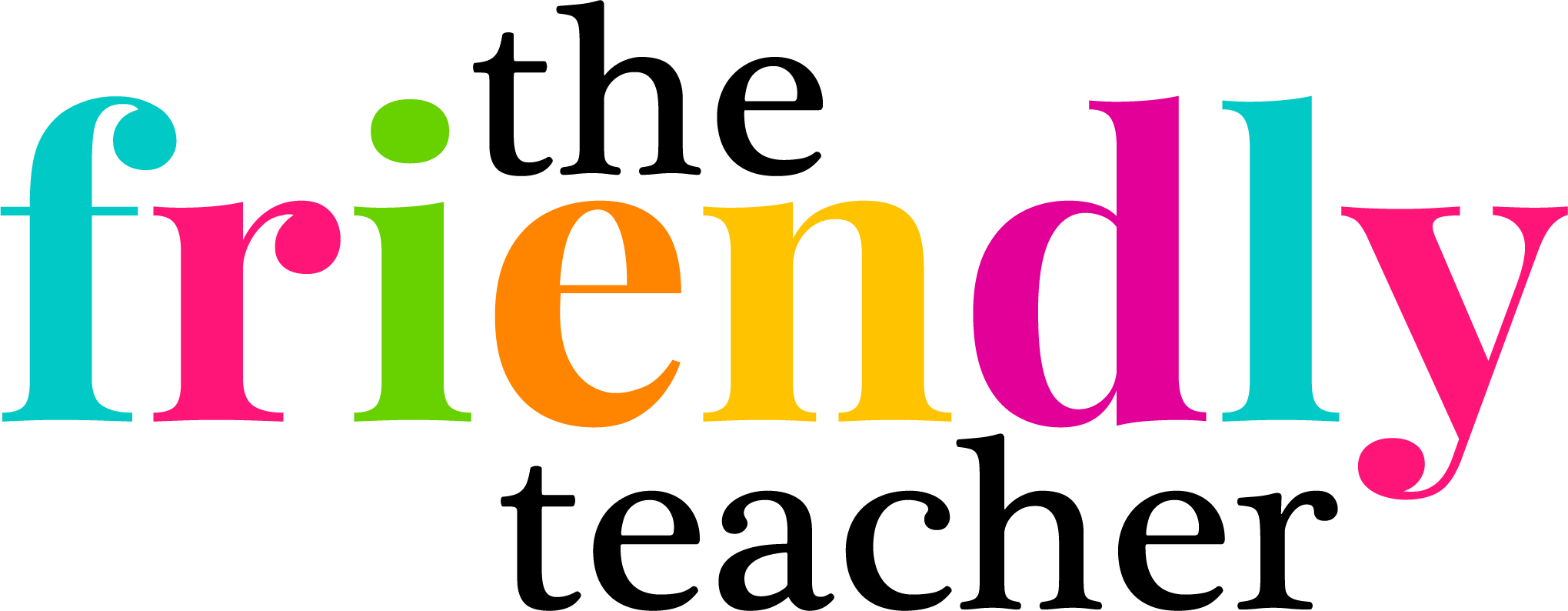


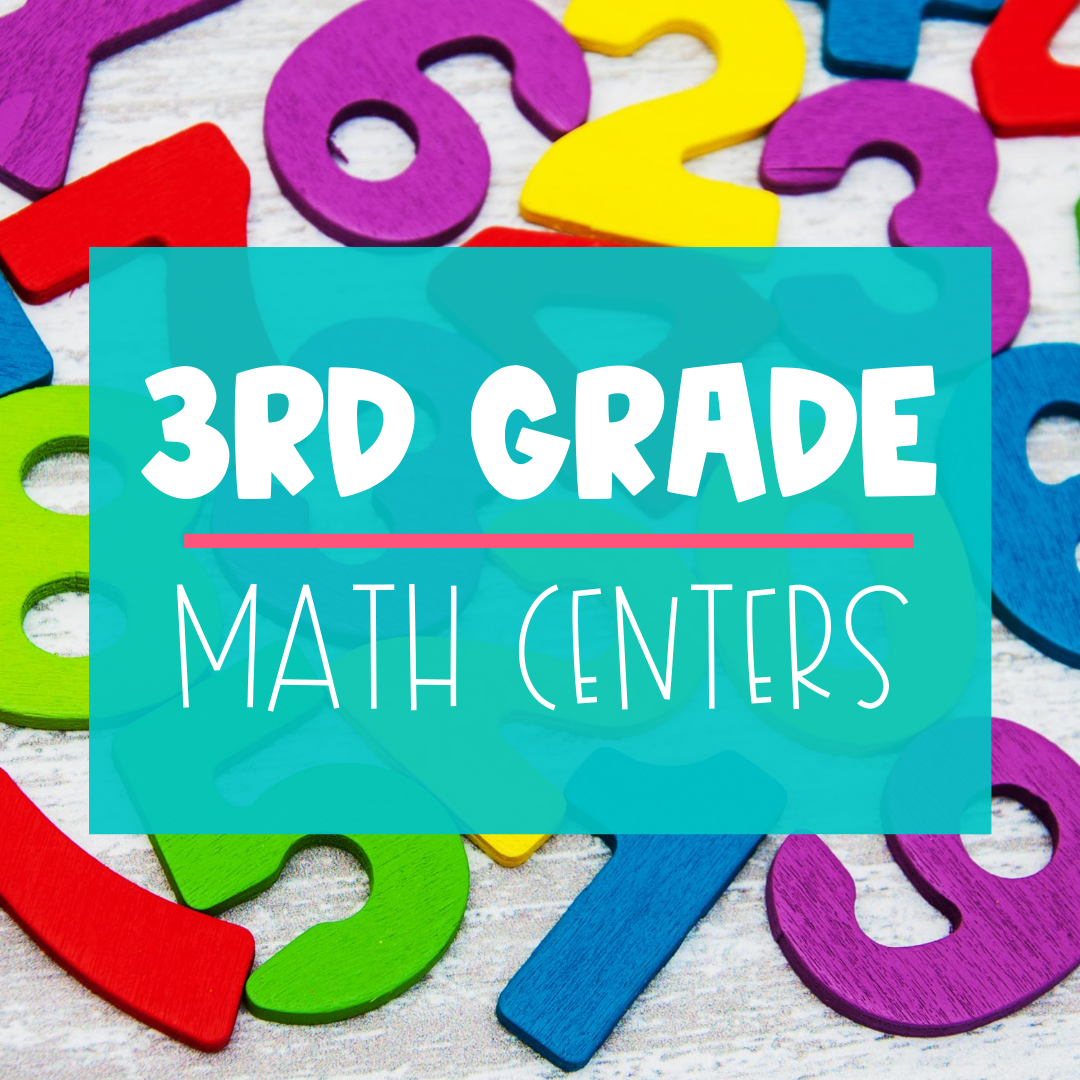





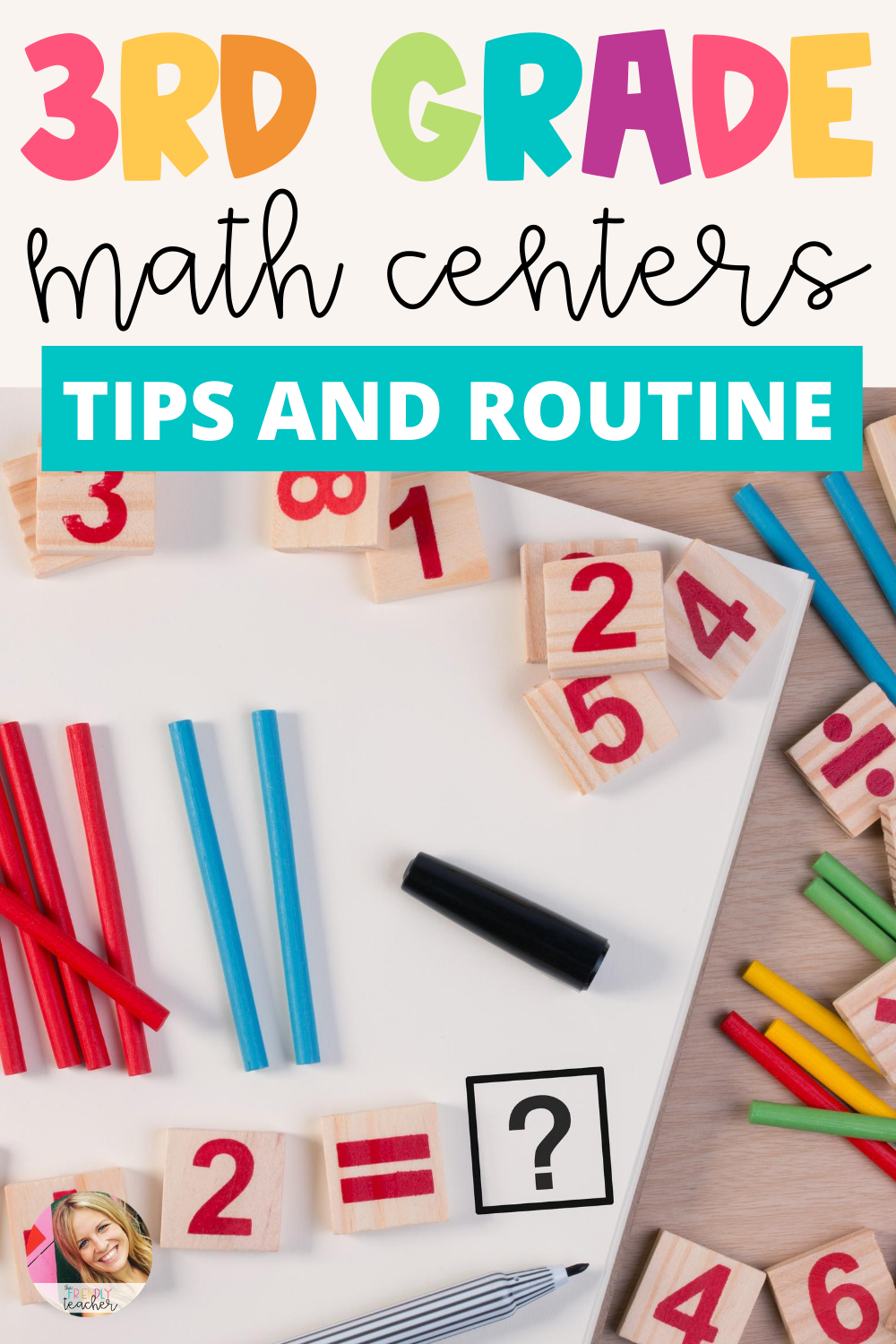

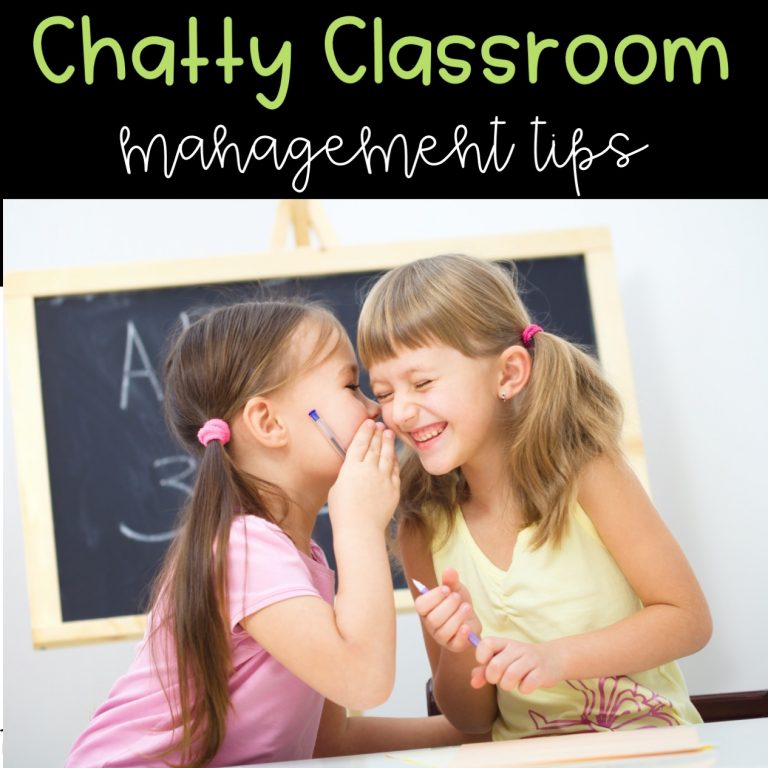

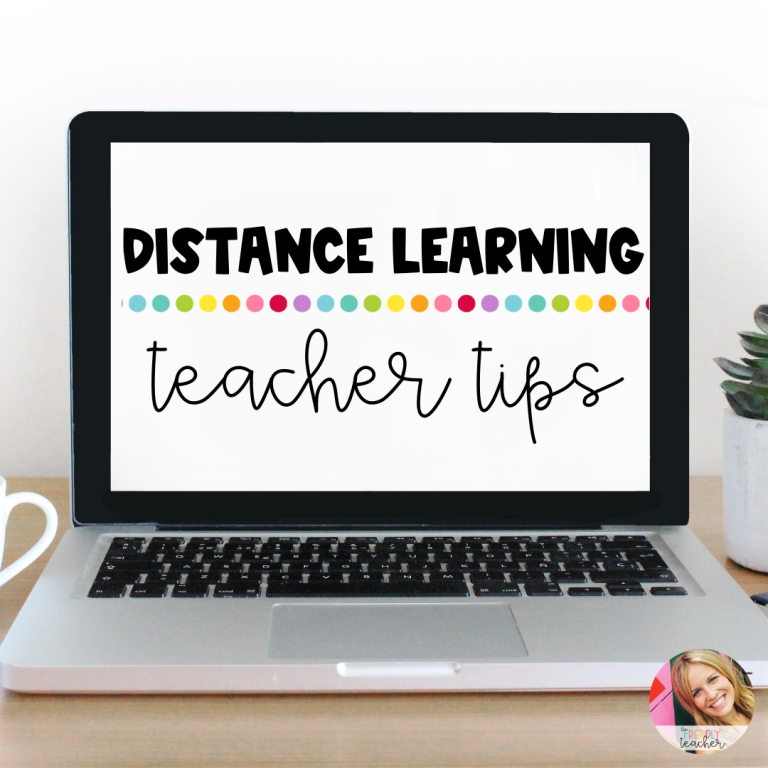

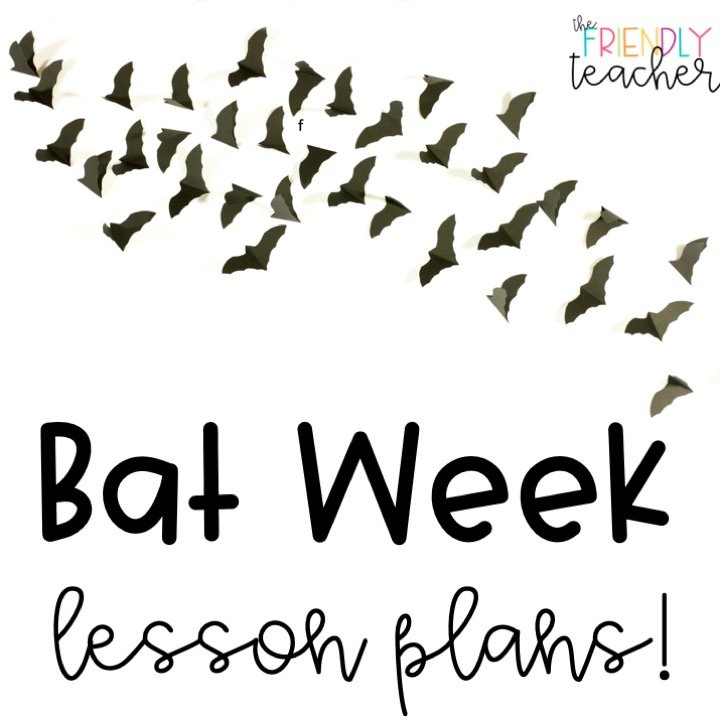


This looks great! Looks like a lot of organization, but if you are organized it seems like every student is getting what they need. It looks like such a great way to teach math. I would like to work towards this approach.
Once you get the hang of it, it is less prep than you think! I usually use their workbook pages for the at your seat (no prep), online is no prep, and the game you can make so simple!
Do you display centers on the board? How do the kids rotate? I teach 3rd-4th LLD and I’m trying to figure out the best way to teach with centers.
I do display the centers on the board with a timer! They always go from meeting with me, to independent work, then tech, then game.
This was awesome. Do you have any recommendations for 3rd grade centers that don’t get too loud? Or dice to not roll off the tables with games?
Honestly, I just give one warning and then they have to do extra worksheets in their workbook and stop playing. Doing this one time usually can get kids to quiet down after warning number one. My kids usually play the games on the floor!
Hi Hannah,
I love your ideas. This will be my second year teaching so I was hoping you can clarify something. You said you review the skill for 5 minutes and then one of the centers is “at your seat,” during which time the students will work on the current skill. What I envision is the students working in their math book at this time. However, I feel like 5 minutes will be too little to teach the skill. I feel like the students working at their seat may still need help at the teacher table before completing their work. I could just see the kids at their seats raising their hands because they don’t understand. So what am I missing? When do you teach the skill ? Thanks for your clarification.
I teach the skill in teacher time! My highest group is the only group that will go to At Your Seat before teacher time. So, my suggestion is to send your highest group to their seat first because it is likely that they will have figured it out and learned it from that five minute mini lesson. Then, the rest of the groups will go to the at your seat after teacher time.
I love all of these ideas! What do you typically do during teacher time with your highest group, especially if they have already completed the independent work?
Also, what happens if a student in the highest group goes to work on their independent practice after the 5 minute mini lesson, but is stuck? Do they get support from a group member?
Thanks!
I will teach them the standard and once I see they have already passed the standard I start enriching them. For example, in multiplication once they have down their facts I begin moving htem into 2 digit, 3 digits, etc. In their own work, they are still working on the third grade level material, but with me I move them on.
Can you give me a schedule of what this looks like for each group?
Is it ok if some groups have 6-7 students and some groups have 4-5 students?
Yup! I just make sure that your lowest group has only 4 students. The high groups can easily get bigger. My high groups are moving faster and seeing enrichment often, while my lower groups are never getting past grade level standard and moving at their pace.
This was so helpful! I have been doing centers but feeling like I am not differentiating enough. Using the teacher time for enrichment is a great suggestion.